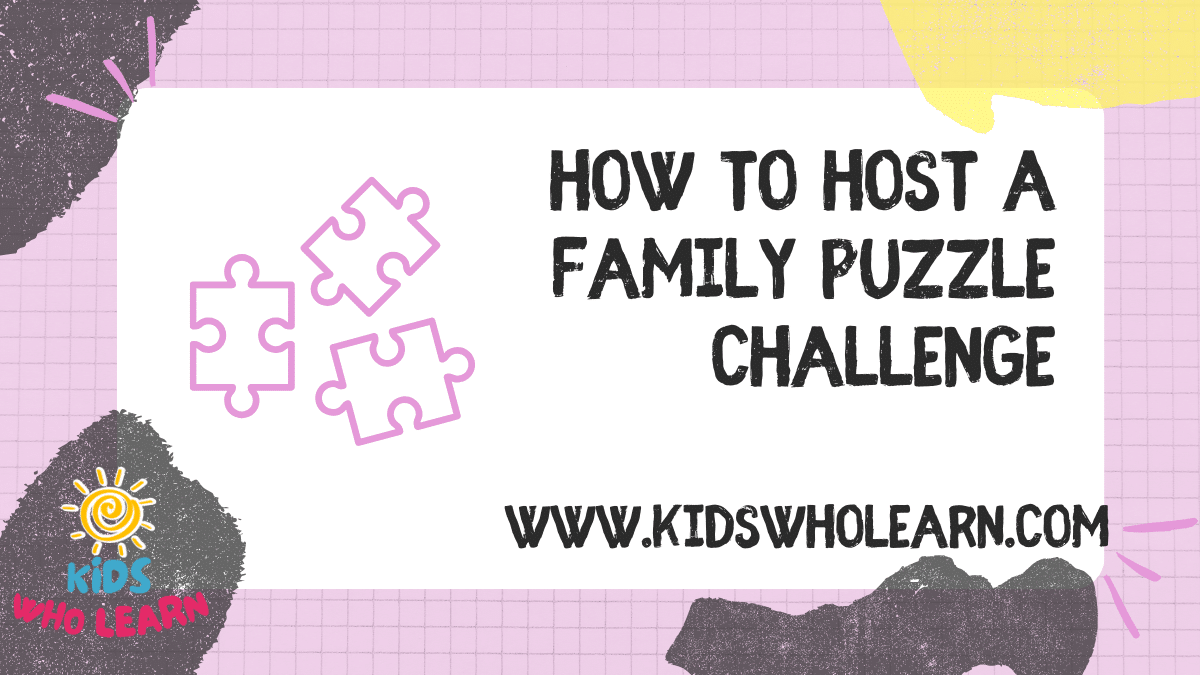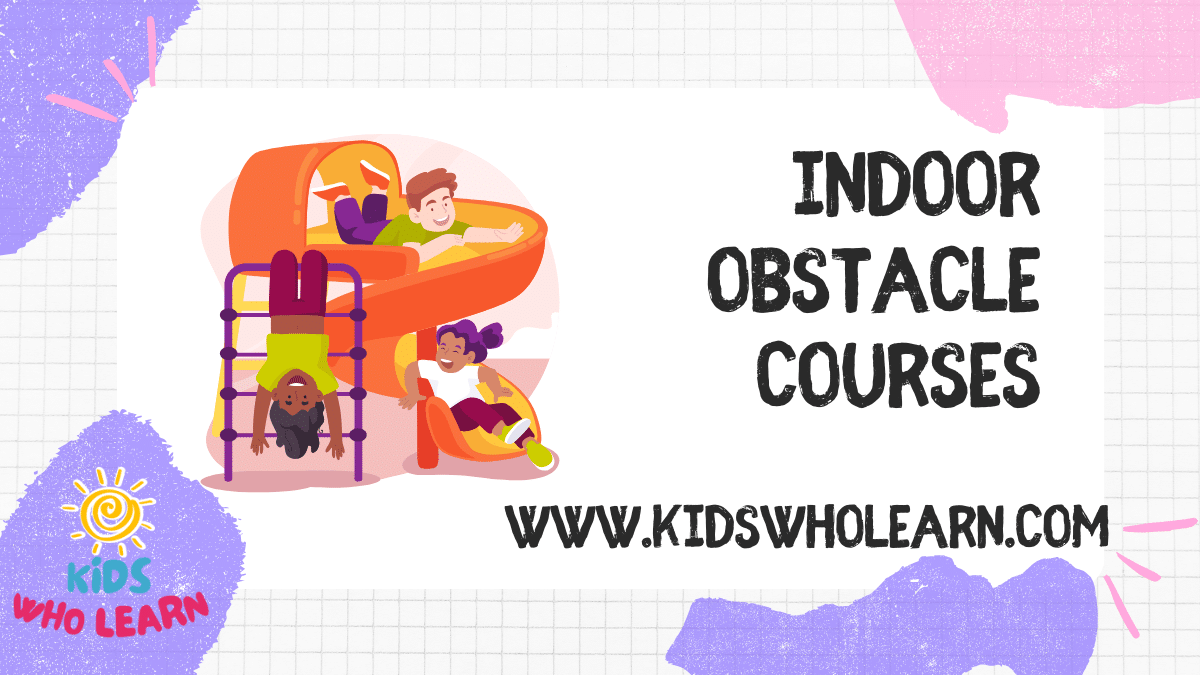Hosting a family puzzle challenge is an exciting way to bring everyone together for a session of fun, teamwork, and healthy competition. Whether it’s a rainy day activity or part of a larger family gathering, puzzles provide a unique opportunity for participants of all ages to engage and collaborate towards a common goal. To ensure a successful event, careful planning and consideration of the puzzle types, difficulty levels, and the interests of your family members are crucial.
Creating an inviting atmosphere and clear guidelines will help maintain the event’s flow and excitement. It’s important to organize teams thoughtfully, keeping in mind the dynamics of your family members, as well as defining rules that are fair and understandable for all participants. Additionally, adding extra elements like themed puzzles or time challenges can enhance the experience, making the puzzle challenge memorable and enjoyable for everyone involved.
Key Takeaways
- Engage and collaborate with family members by carefully selecting diverse puzzles.
- Maintain event flow with a well-thought-out structure and clear, fair rules.
- Enhance enjoyment by incorporating creative elements and ensuring an inviting atmosphere.
Choosing the Right Puzzles
Selecting the right puzzles for your family challenge ensures an engaging and enjoyable experience for all participants. Puzzles should vary in theme and difficulty, and offer different types of challenges to cater to varying skill levels and interests.
Selecting Puzzle Themes
Choose themes that resonate with your family’s interests. Popular themes include nature, landmarks, fine art, and pop culture. For instance, jigsaw puzzles with animal motifs are often a hit with children, while adults may prefer intricate landscape or historical scenes.
Considering Difficulty Levels
Pay attention to the number of pieces and puzzle complexity. For beginners, 100-300 piece puzzles are a good start, while experienced enthusiasts can tackle a 1000 piece puzzle or more. It’s best to have a range, such as:
- Beginner: 100-300 pieces
- Intermediate: 500-750 pieces
- Advanced: 1000+ pieces
Diversity of Puzzle Types
Include a variety of puzzle types to challenge different skill sets. Alongside traditional jigsaw puzzles, integrating crossword puzzles, sudoku, and word searches can provide a well-rounded challenge. This variety not only keeps the challenge fresh but also ensures that everyone has an opportunity to excel at a particular type of puzzle.
Setting Up the Challenge
When hosting a family puzzle challenge, it’s crucial that you systematically arrange your venue, tables, chairs, and puzzle stations to create an engaging environment. Your planning and organization will ensure a smooth event.
Securing the Venue
Choose a space that comfortably fits your expected number of participants plus extra room for movement. Confirm your reservation well in advance, considering the below criteria:
- Accessibility: Ensure the venue is easily accessible for all family members with appropriate parking and entry points.
- Capacity: Calculate the venue size required based on the number of participants to avoid overcrowding. A general guideline is approximately 10 square feet per person.
- Facilities: Verify that there are adequate restrooms, lighting, and climate control to maintain comfort.
Arranging Tables and Chairs
Layout is paramount for participant comfort and puzzle-solving efficiency:
- Tables: Arrange sturdy tables in a way that each has ample space around it for movement. Here is a quick setup guide:
Table Type Dimensions Quantity Round Table 5-foot diameter Determine based on participants Rectangular Table 6 feet by 2.5 feet As needed - Chairs: Provide comfortable chairs for each participant. Ensure they do not obstruct pathways.
- Organization: Place each table and chair set evenly spaced out, allowing teams to communicate without disturbing others, and providing easy access to puzzle stations.
Preparing Puzzle Stations
Every puzzle station should be well-equipped and ordered:
- Puzzle Pieces: Pre-sort puzzle pieces into their respective boxes. It’s pivotal to check that all pieces are included to avoid any disruption during the challenge.
Puzzle Station Puzzle Type Piece Count Station 1 Landscape 500 Station 2 Abstract 1000 - Boxes: Clearly label each puzzle box with the difficulty level and suggest a timeframe for completion, aiding in setting expectations for participants.
Remember, meticulous setup is the foundation of hosting a successful puzzle challenge that can be enjoyed by all family members.
Organizing Teams and Participants
Creating a successful family puzzle challenge hinges on setting up teams efficiently and ensuring a diverse mix of participants. Proper team organization will enhance the competition and enjoyment for everyone involved.
Establishing Team Size
- Ideal Team Composition: Aim for teams of 3-4 members. This size is large enough to foster collaboration but small enough to keep everyone engaged.
- Family and Friends: Encourage families to mix with friends to form teams, enhancing the social experience.
- Puzzle Clubs and Community Groups: If your event is open to the community, invite puzzle clubs or groups to join, which can increase both competitiveness and camaraderie.
Encouraging Diverse Participation
- Inclusivity: Welcome participants of all skill levels, from novices to expert puzzle solvers.
- Age Range: Make sure to have a variety of age groups represented on each team, combining the enthusiasm of youth with the experience of older participants.
- Individuals without Teams: Provide a system for individuals to join pre-existing teams or to form new ones, ensuring that everyone who wants to take part can do so.
Designing the Competition Rules
Crafting a clear set of competition rules ensures fairness and enjoyment for all participants. Your rules should define the structure, lay out how to score, handle ties, and detail the variety of puzzles included.
Structuring Rounds and Time Limits
- Rounds: Determine the number of rounds your competition will have. For a family event, three to five rounds of increasing difficulty create an engaging challenge.
- Time Limit: Establish a strict time limit for each round. For example, you might allot 15 minutes for a simple crossword round, 30 minutes for intermediate sudoku, and 45 minutes for a complex jigsaw puzzle. Use a visible timer to keep track of elapsed time and announce when time is running short.
Determining Scoring and Tie-Breakers
- Scoring: Decide how points are awarded. Assign a point value for each solved puzzle, with bonus points for speed or difficulty.
Puzzle Type Base Points Bonus for Speed Bonus for Difficulty Jigsaw 10 points +5 points +10 points Sudoku 15 points +10 points +15 points Crossword 20 points +10 points +20 points - Tie-Breakers: In case of ties, have a predetermined method to break them. This might involve a sudden-death round focused on a unique puzzle or awarding the win to the contestant who completed the most puzzles in the shortest cumulative time.
Incorporating Different Puzzle Challenges
- Variety of Puzzles: Include a range of puzzles such as jigsaw puzzles, sudoku, and crossword puzzles to test different skills and keep the competition diverse.
- Difficulty Levels: Ensure puzzles vary in difficulty, enabling participants of all ages and skill levels to contribute. For instance, younger children could tackle simpler jigsaws while adults work on more complex sudoku grids.
- Interactive Elements: Consider introducing puzzles that require physical manipulation or team collaboration to add an exciting twist to the classic puzzle-solving experience.
Promoting the Event
Effectively promoting your family puzzle challenge is crucial for attracting participants and creating a buzz. Utilize social media, engage with local puzzle enthusiasts, and secure appealing prizes to ensure a successful event.
Advertising through Social Media
First and foremost, establish a strong presence on social media platforms to reach a broad audience. Create a unique hashtag for your event to encourage sharing and discussion.
- Facebook: Set up an event page and invite followers.
- Twitter: Tweet regular updates and use your hashtag.
- Instagram: Post eye-catching images of puzzles and use stories to announce prizes.
Remember to post regularly and interact with followers to maintain interest.
Securing Sponsors and Prizes
Approach local businesses and brands that align with your audience for sponsorship opportunities. Provide them with detailed information about the event and the potential for brand exposure. In return, sponsors can offer prizes that can range from puzzle sets to gift certificates.
- Create a sponsorship proposal that includes:
- Event details
- Demographics of expected participants
- Sponsorship levels and benefits
Highlight the benefits of sponsoring, such as increased brand visibility among local families and puzzle enthusiasts.
Engaging Local Puzzle Community
Build relationships with local puzzle clubs and organizations to help advertise your event and attract serious puzzle competitors.
- Identify local puzzle clubs and reach out to their leaders.
- Offer a special category or prize for club members.
- Consider hosting a stand at local puzzle competitions to promote your event.
Encouraging the puzzle community to get involved will not only boost attendance but also enhance the competitive spirit of your family puzzle challenge.
Incorporating Additional Elements
When hosting a family puzzle challenge, enhancing the experience with carefully chosen prizes, refreshments, and strategic guidelines can significantly elevate the fun and competitive spirit.
Selecting Appropriate Prizes and Awards
Types of Prizes:
- Recognition Prizes: Certificates, trophies or medals for different categories such as “Fastest Puzzle Completion”, “Best Teamwork”, or “Most Creative Solving Technique”.
- Physical Prizes: Fun and thematic items like puzzle mats, puzzle storage cases, or gift cards to puzzle stores.
Selection Criteria: Choose prizes that will motivate participants but also adhere to the spirit of family-friendly competition. Items that encourage further development of problem-solving skills or promote more family activities are ideal.
Providing Snacks and Refreshments
Options for Snacks:
- Healthy Snacks: Fruit slices, veggie trays, and nuts; these not only satisfy but also aid in maintaining concentration.
- Comfort Snacks: Cookies, chips, and popcorn to add an element of indulgence.
Refreshment Suggestions: Offer a variety of drinks, such as water, juices, and soft drinks, to keep everyone hydrated. Ensure that all snacks and refreshments are easily accessible throughout the event to keep energy levels high and allow participants to refuel without significant interruption to their puzzle solving.
Facilitating Puzzle Solving Strategies
Strategic Tips:
- Puzzle Sorting: Start by sorting edges and similarly colored pieces.
- Team Strategies: Encourage team members to divide areas of the puzzle or patterns to work on concurrently.
Critical Thinking: Discuss the value of patience and methodical tactics. Point out how critical thinking can be applied to assemble puzzles more efficiently. Encourage participants to share strategies to enhance the collective family problem-solving skills.
Concluding the Puzzle Challenge
Wrapping up your family puzzle challenge effectively involves recognizing achievements and nurturing the bonds that have been strengthened throughout the event.
Announcing Winners and Awards
Once the final puzzle is in place, gather all participants to celebrate the winners. Your announcement should be clear and enthusiastic:
- First Place: Award the grand prize to the team with the fastest overall time.
- Special Categories: Acknowledge teams with awards for creativity, problem-solving, and teamwork.
Use this time to hand out the prizes and awards, ensuring each recipient feels recognized for their efforts. A table of awards can help you organize the ceremony:
| Award Category | Recipient(s) | Prize |
|---|---|---|
| Fastest Solution | Team/Individual Name | Specific Prize |
| Best Teamwork | Team Name | Specific Prize |
| Most Creative Strategy | Team Name | Specific Prize |
Fostering Camaraderie and Community
Even beyond the awards, it’s important to emphasize the enjoyment and the friendly competition that are the heart of your puzzle challenge. Encourage participants to share their experiences and the fun they had working together:
- Sharing Moments: Prompt teams to talk about memorable puzzles or challenges.
- Group Photo: Capture a group photo to commemorate the collective effort and the strengthened camaraderie within the family and friends.
Suggest forming a puzzle club for continued engagement and to keep the spirit of the challenge alive. This can fortify the bonds of camaraderie and set the stage for future gatherings, celebrating not just individual victories but the collective joy of the event.
Frequently Asked Questions
When hosting a family puzzle challenge, being prepared with the right materials and a well-thought-out plan ensures an enjoyable experience for all participants.
What materials are needed to create a DIY escape room for a family puzzle challenge?
To create a DIY escape room, you will need basic supplies such as paper and pens for puzzles, locks and boxes for physical challenges, and diverse props to set your theme. Consider using technology like computers or smartphones for multimedia clues.
How can you adapt escape room puzzles to be enjoyable for all ages in a family setting?
To adapt puzzles for all ages, include a variety of difficulty levels, from simple color-matching or shape-sorting tasks for younger kids to more complex riddles and logic puzzles for adults. Interactivity helps, such as puzzles that require physical movement or teamwork.
What are some creative puzzle ideas suitable for adding to a family puzzle night?
Creative puzzle ideas include a treasure hunt with a series of clues, word searches with hidden messages, jigsaw puzzles that reveal a secret upon completion, and cipher codes that must be deciphered to reveal a clue or location.
What are effective methods for timing and scoring in a family puzzle competition?
Use a stopwatch or a timer app for pacing the challenge. Points can be awarded for correct answers, with bonus points for speed or creativity. Consider penalty points for hints to keep the game competitive.
Where can you find free resources for printable puzzles to include in a homemade escape room?
There are numerous websites that offer free printable puzzles ranging from crosswords and word finds to more complex logic and math puzzles. Libraries and educational websites are also excellent sources for a variety of age-appropriate puzzles.
How do you organize and facilitate a smooth-running puzzle competition at home?
Assign clear roles to all participants and ensure everyone understands the rules and objectives. Use a checklist to prepare all materials and puzzles in advance. Keep a solution key and hints ready for guidance to maintain the flow of the competition.














